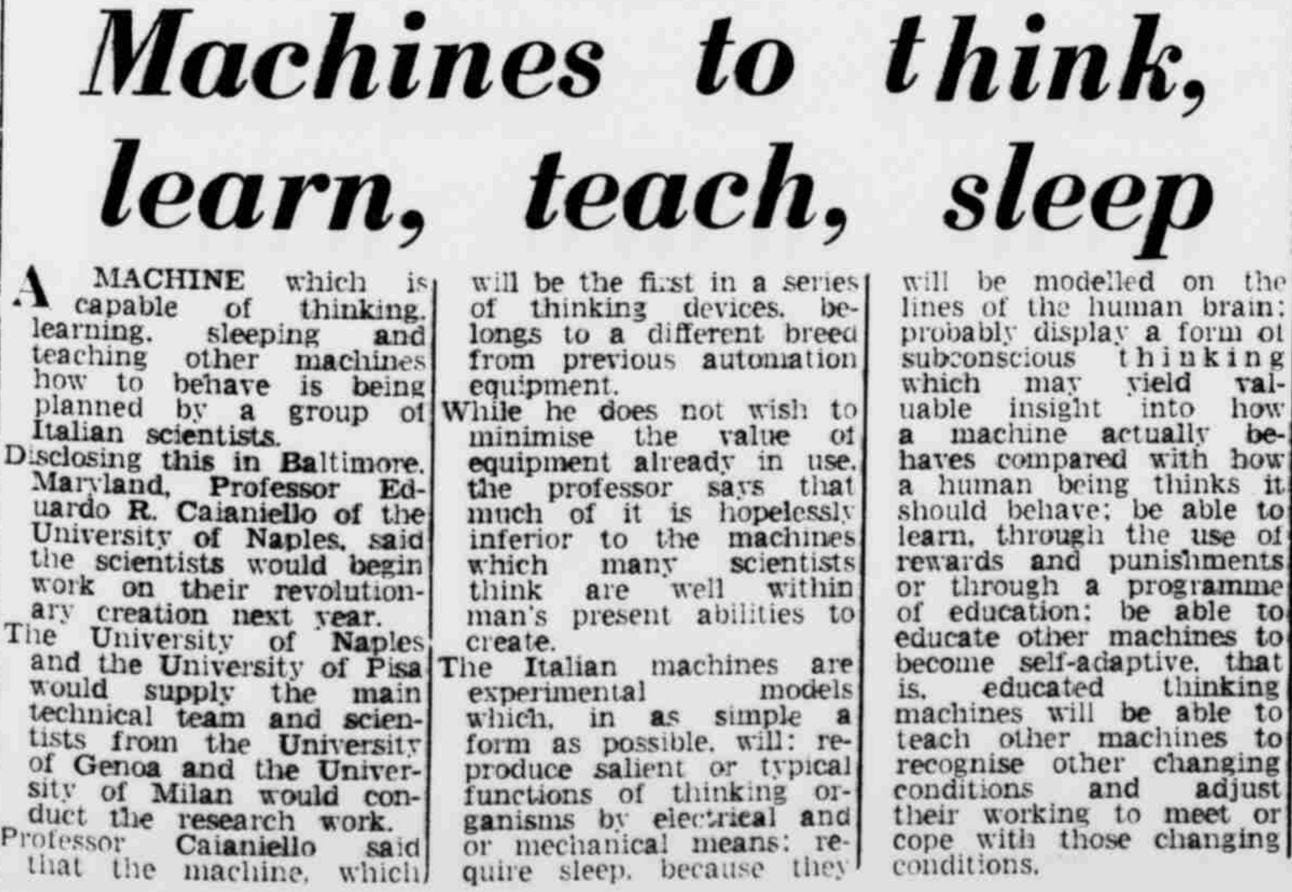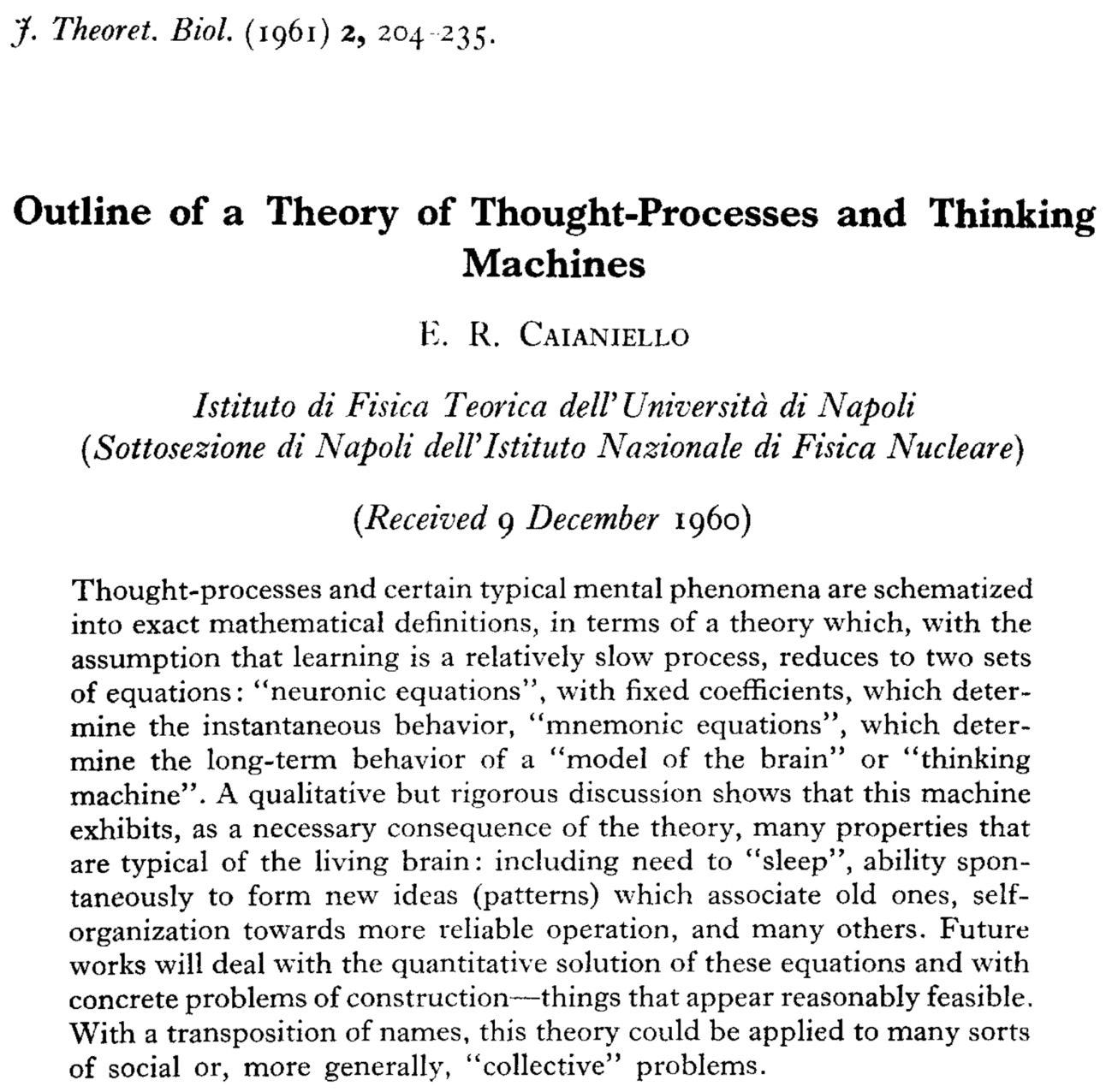Machines to think 🤖, learn 📚, teach 👩🏫, and sleep 🛏️!
📣 Got something to feature in our newsletter? ✉️ Email us at editor@aihistory.news, and we’ll take it from there! 🚀
An article in the Peterborough Evening Telegraph (1 August 1961) highlighted Italian scientists, led by Professor Eduardo R. Caianiello, planning to develop machines capable of thinking, learning, teaching, and even “sleeping,” modeled on the human brain. These experimental devices aimed to mimic human cognitive processes and adapt to changing conditions.
The article in the Peterborough Evening Telegraph seems to be related to the paper Outline of a Theory of Thought-Processes and Thinking Machines by Professor Eduardo R. Caianiello. In his paper, Caianiello proposed a mathematical model to simulate human thought processes using two sets of equations: “neuronic equations” to describe instantaneous behavior and “mnemonic equations” for memory development. He explained how this model could reproduce key features of the brain, such as learning, self-organization, and even a need for “sleep.” The article reflects these ideas by discussing plans to create machines capable of thinking, learning, and teaching, as envisioned by Caianiello’s pioneering work.



